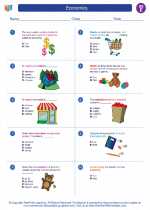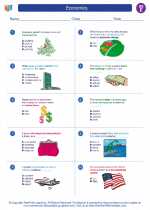National Curriculum Standards for Social Studies (NCSS)
PRODUCTION, DISTRIBUTION, AND CONSUMPTION
SOCIAL STUDIES PROGRAMS SHOULD INCLUDE EXPERIENCES THAT PROVIDE FOR THE STUDY OF HOW PEOPLE ORGANIZE FOR THE PRODUCTION, DISTRIBUTION, AND CONSUMPTION OF GOODS AND SERVICES.
KNOWLEDGE - Learners will understand:
Individuals, government, and society experience scarcity because human wants and needs exceed what can be produced from available resources.
How markets bring buyers and sellers together to exchange goods and services.
How goods and services are allocated in a market economy through the influence of prices on decisions about production and consumption.
GLOBAL CONNECTIONS
SOCIAL STUDIES PROGRAMS SHOULD INCLUDE EXPERIENCES THAT PROVIDE FOR THE STUDY OF GLOBAL CONNECTIONS AND INTERDEPENDENCE.
KNOWLEDGE - Learners will understand:
Global connections have existed in the past and increased rapidly in current times.
PROCESSES - Learners will be able to:
Ask and find answers to questions about the ways in which people and societies are connected globally today and were connected in the past.
National Standards for Civics and Government (NSCG)
What are the foundations of the American political system? What are the distinctive characteristics of American society?
Distinctive characteristics of American society. Students should be able to identify and explain the importance of historical experience and geographic, social, and economic factors that have helped to shape American society. To achieve this standard, students should be able to
Explain important factors that have helped shape American society
Market economy
How does the government established by the constitution embody the purposes, values, and principles of American democracy? What does the national government do?
Financing government through taxation. Students should be able to explain the necessity of taxes and the purposes for which taxes are used. To achieve this standard, students should be able to
Explain why taxation is necessary to pay for government
Identify provisions of the United States Constitution that authorize the national government to collect taxes, i.e., Article One, Sections 7 and 8; Sixteenth Amendment
Identify major sources of revenue for the national government, e.g., individual income taxes, social insurance receipts (Social Security and Medicare), borrowing, taxes on corporations and businesses, estate and excise taxes, tariffs on foreign goods
Identify major uses of tax revenues received by the national government, e.g., direct payment to individuals (Social Security, Medicaid, Medicare, Aid to Families with Dependent Children), national defense, interest on the federal debt, interstate highways
How does the government established by the constitution embody the purposes, values, and principles of American democracy? How are state and local governments organized and what do they do?
Organization and responsibilities of state and local governments. Students should be able to describe the organization and major responsibilities of state and local governments. To achieve this standard, students should be able to
Identify major sources of revenue for state and local governments, e.g., property, sales, and income taxes; fees and licenses; taxes on corporations and businesses; borrowing
What is the relationship of the United States to other nations and to world affairs? How is the world organized politically?
Interaction among nation-states. Students should be able to explain how nation-states interact with each other. To achieve this standard, students should be able to
Describe the most important means nation-states use to interact with one another
Economic incentives and sanctions
National Content Standards in Economics (NCSE)
Scarcity
Students will understand that productive resources are limited. Therefore, people cannot have all the goods and services they want; as a result, they must choose some things and give up others. Students will be able to use this knowledge to identify what they gain and what they give up when they make choices.
At the completion of Grade 8, students will know the Grade 4 benchmarks for this standard, and also that:
Scarcity is the condition of not being able to have all of the goods and services that one wants. It exists because human wants for goods and services exceed the quantity of goods and services that can be produced using all available resources. Scarcity is experienced by individuals, governments, and societies.
Allocation
Students will understand that different methods can be used to allocate goods and services. People acting individually or collectively must choose which methods to use to allocate different kinds of goods and services. Students will be able to use this knowledge to evaluate different methods of allocating goods and services, by comparing the benefits to the costs of each method.
At the completion of Grade 8, students will know the Grade 4 benchmarks for this standard, and also that:
Scarcity requires the use of some distribution method to allocate goods, services, and resources, whether the method is selected explicitly or not.
At the completion of Grade 8, students will know the Grade 4 benchmarks for this standard, and also that:
There are essential differences between a market economy, in which allocations result from individuals making decisions as buyers and sellers, and a command economy, in which resources are allocated according to central authority.
National economies vary in the extent to which they rely on government directives (central planning) and signals (prices) from private markets to allocate scarce goods, services, and productive resources.
As consumers, people use resources in different ways to satisfy different wants. Productive resources can be used in different ways to produce different goods and services.
Trade
Students will understand that voluntary exchange occurs only when all participating parties expect to gain. This is true for trade among individuals or organizations within a nation, and among individuals or organizations in different nations. Students will be able to use this knowledge to negotiate exchanges and identify the gains to themselves and others. Compare the benefits and costs of policies that alter trade barriers between nations, such as tariffs and quotas.
At the completion of Grade 8, students will know the Grade 4 benchmarks for this standard, and also that:
Imports are foreign goods and services that are purchased from sellers in other nations.
Exports are domestic goods and services that are sold to buyers in other nations.
At the completion of Grade 8, students will use this knowledge to:
Determine what major products are produced in their community or state for export and the countries to which they are exported.
Specialization
Students will understand that when individuals, regions, and nations specialize in what they can produce at the lowest cost and then trade with others, both production and consumption increase. Students will be able to use this knowledge to explain how they can benefit themselves and others by developing special skills and strengths.
At the completion of Grade 8, students will know the Grade 4 benchmarks for this standard, and also that:
As a result of growing international economic interdependence, economic conditions and policies in one nation increasingly affect economic conditions and policies in other nations.
Markets and Prices
Students will understand that a market exists when buyers and sellers interact. This interaction determines market prices and thereby allocates scarce goods and services. Students will be able to use this knowledge to identify markets in which they have participated as a buyer and as a seller and describe how the interaction of all buyers and sellers influences prices. Also, predict how prices change when there is either a shortage or surplus of the product available.
At the completion of Grade 8, students will use this knowledge to:
Identify examples of products for which the price fell because sellers did not sell all they had produced at the initial price; identify examples of other products for which the price rose because consumers wanted to buy more than producers were producing at the initial price.
Role of Government and Market Failure
Students will understand that there is an economic role for government in a market economy whenever the benefits of a government policy outweigh its costs. Governments often provide for national defense, address environmental concerns, define and protect property rights, and attempt to make markets more competitive. Most government policies also have direct or indirect effects on people’s incomes. Students will be able to use this knowledge to identify and evaluate the benefits and costs of alternative public policies, and assess who enjoys the benefits and who bears the costs.
At the completion of Grade 8, students will know the Grade 4 benchmarks for this standard, and also that:
Most federal government tax revenue comes from personal income and payroll taxes. Payments to Social Security recipients, the costs of national defense and homeland security, medical expenditures (such as Medicare), transfers to state and local governments, and interest payments on the national debt constitute the bulk of federal government spending.
At the completion of Grade 8, students will use this knowledge to:
Compare the various sources of state and local revenues and various categories of state and local expenditures in their state and community with those of the U.S. federal government.
Economic Fluctuations
Students will understand that fluctuations in a nation’s overall levels of income, employment, and prices are determined by the interaction of spending and production decisions made by all households, firms, government agencies, and others in the economy. Recessions occur when overall levels of income and employment decline. Students will be able to use this knowledge to interpret media reports about current economic conditions and explain how these conditions can influence decisions made by consumers, producers, and government policy makers.
At the completion of Grade 8, students will know that:
Net exports equal the value of exports (goods and services sold to other countries) minus the value of imports (goods and services bought from other countries). Net exports can be either positive (trade surplus) or negative (trade deficit).
At the completion of Grade 8, students will use this knowledge to:
Calculate what has happened to net U.S. exports because of changes in exports and imports over the last 10 years. Identify whether there has been a trade surplus or trade deficit over these years.
National Center for History in Schools (NCHS)
World History Content Standards
Era 9: The 20th Century Since 1945: Promises and Paradoxes
The search for community, stability, and peace in an interdependent world.
The student understands how increasing economic interdependence has transformed human society.
The student understands how liberal democracy, market economies, and human rights movements have reshaped political and social life.
Major global trends since World War II.
The student understands major global trends since World War II.



